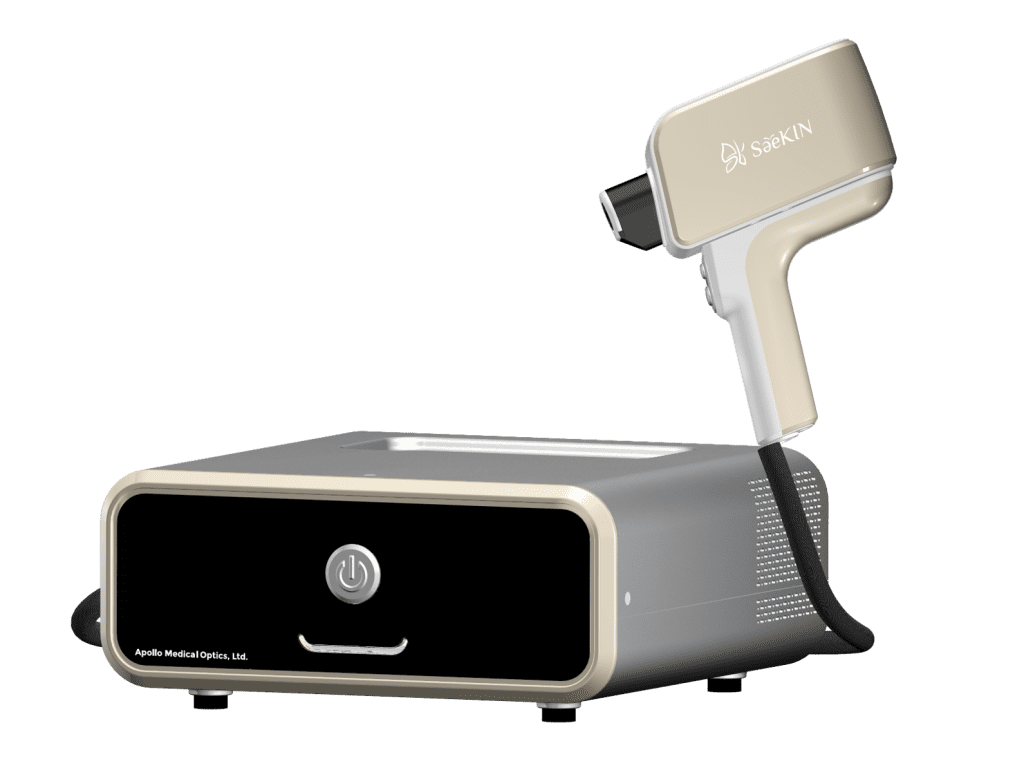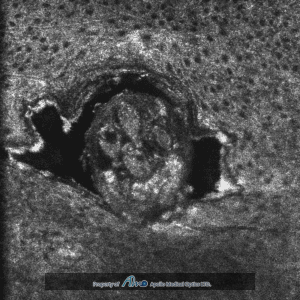

The Cellular Resolution in vivo OCT System Your Best Partner for Skin Diagnosis
SeeKIN, based on OCT technology, is a skin layer optical scanning device. It provides horizontal and vertical images to observe cellular structure beneath the skin. It also features computation and report generation capabilities.
Our technology can detect and quantify melanosome size, active melanocytes, and collagen healthiness to track and monitor the skin’s condition in response to skincare products.




Resolution of OCT | |
|---|---|
Depth | < 1.3 μm
|
Lateral | < 1.2 μm |
OCT Field of view | |
|---|---|
B-scan (Cross-sectional imaging) | 500 μm (width) *300 μm (depth) |
E-scan (En-face imaging) | 500 μm*500 μm |
Scanning speed | |
|---|---|
B-scan (Cross-sectional imaging) | < 6.1 seconds |
E-scan (En-face imaging) | 2D frane rate >20 Hz |
Other | |
|---|---|
Spectral Range | OCT-2.a Light source center wavelength = 560 nm+/-10nm; OCT-2.b Light source bandwidth ≥ 80 nm |
Light Output Power | 4 mW |
Guiding Image | Embedded video dermatoscope, square color image, 5mm*5mm |
Weight | 9 Kg |
Size | 330*351*143 (mm) |
During clinical diagnosis, physicians need to obtain as much information as possible. Therefore, combining the Optical Coherence Tomography (OCT) system with the image guiding function can enhance its clinical usability and is vital to improving examination efficiency.
AMO’s image guiding system allows users to switch between skin image guiding and OCT scanning modes according to different needs. To start off, the user finds the area to be scanned using the image guiding mode. During the scan, the user will switch to the OCT scanning mode, then switch back to the image guidance mode once the scan is complete.
Based on a patient’s various pathologies, detailed images need to be taken in multiple directions in order to provide the physician with sufficient information for interpretation and clinical diagnosis.
The user can easily switch between the cross-sectional scan (B-scan) and the en face scan (E-scan) in just 1 second. This avoids the potentially disastrous issue of overlooking a lesion and makes the process of diagnosis much more efficient.
AMO’s OCT provides a three-dimensional isotropic resolution up to one micrometer which is essential for a three-dimensional image. ApolloVue S100 could acquire the E-scans continuously and reconstruct the three-dimensional images which allows users to explore the image in any section.


Apollo Medical Optics, Ltd.
2F., No.43, Ln. 188
Ruiguang Rd., Neihu Dist.
Taipei City 114, Taiwan (R.O.C.)
Copyright © 2025 Apollo Medical Optics Ltd. All rights reserved. Powered by Webhoster.ca